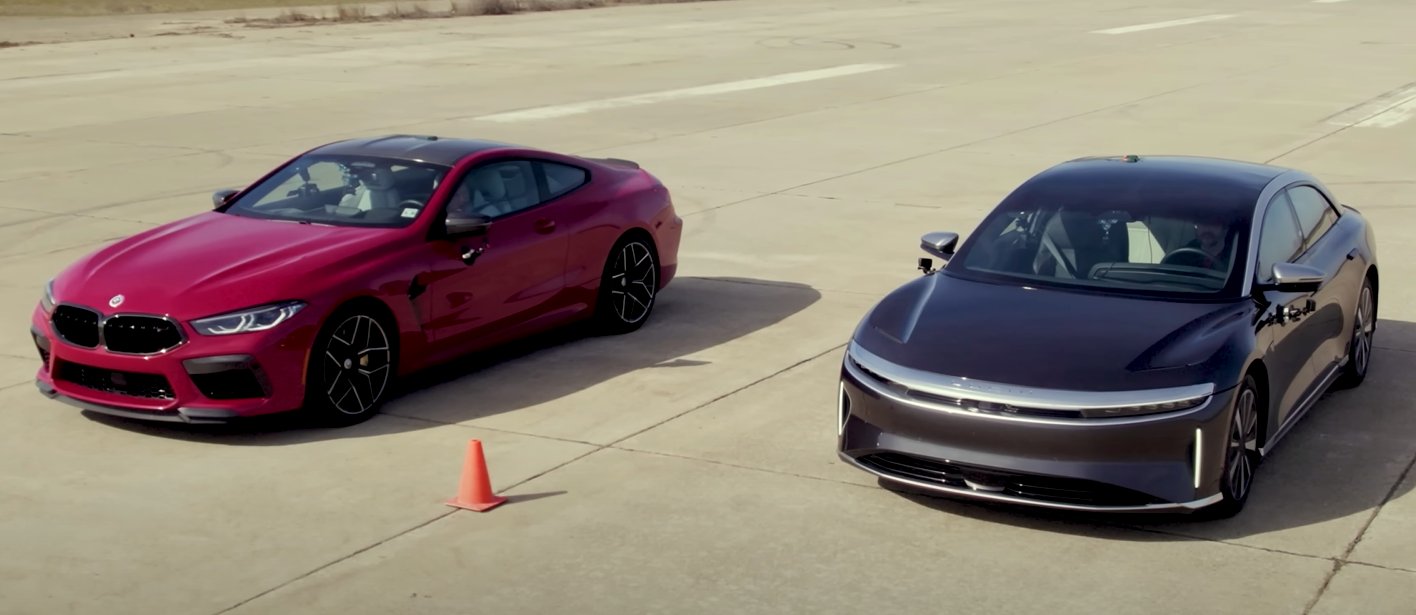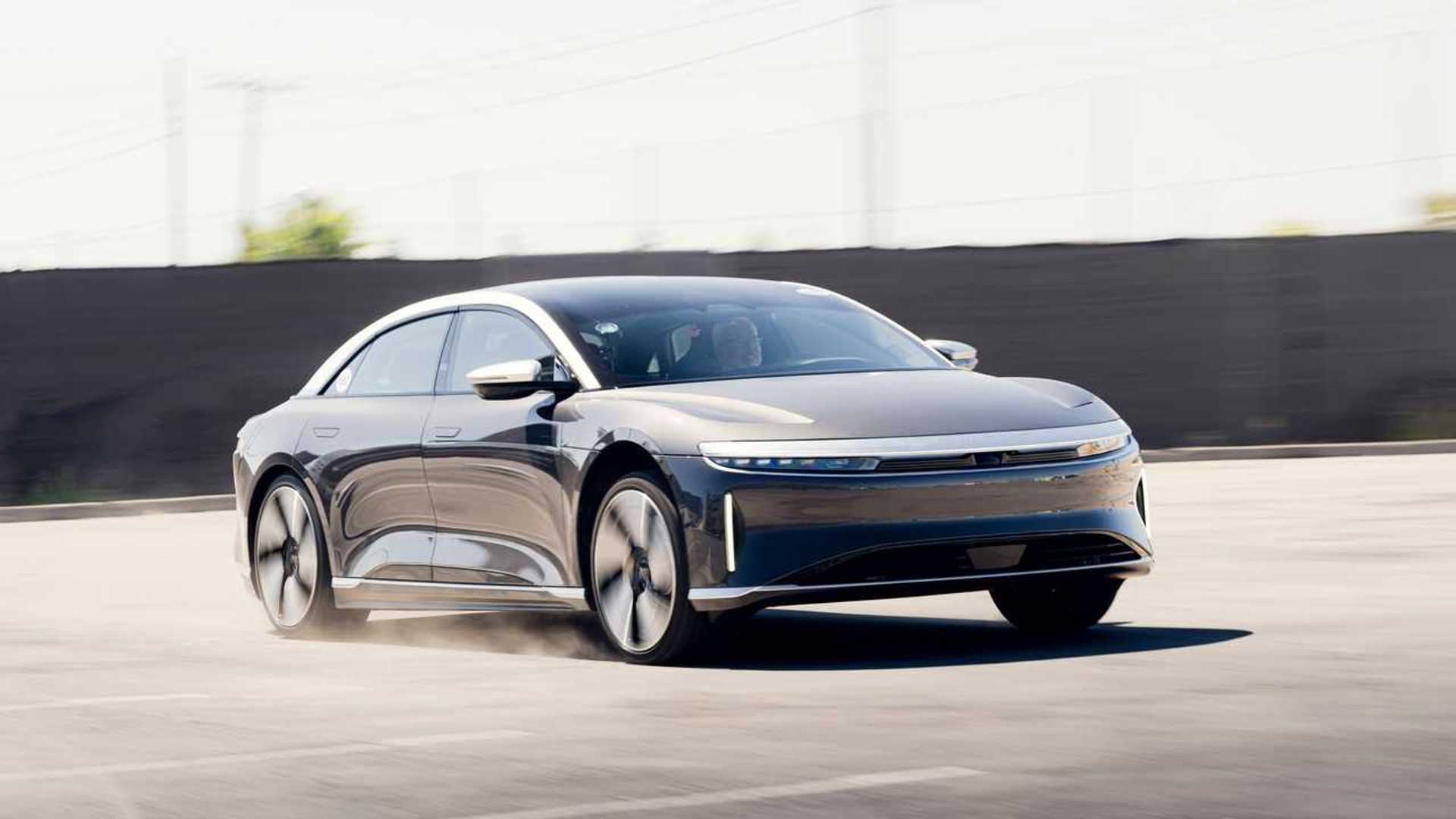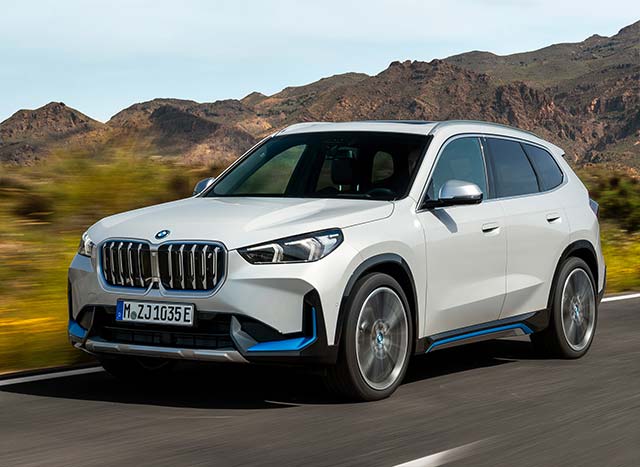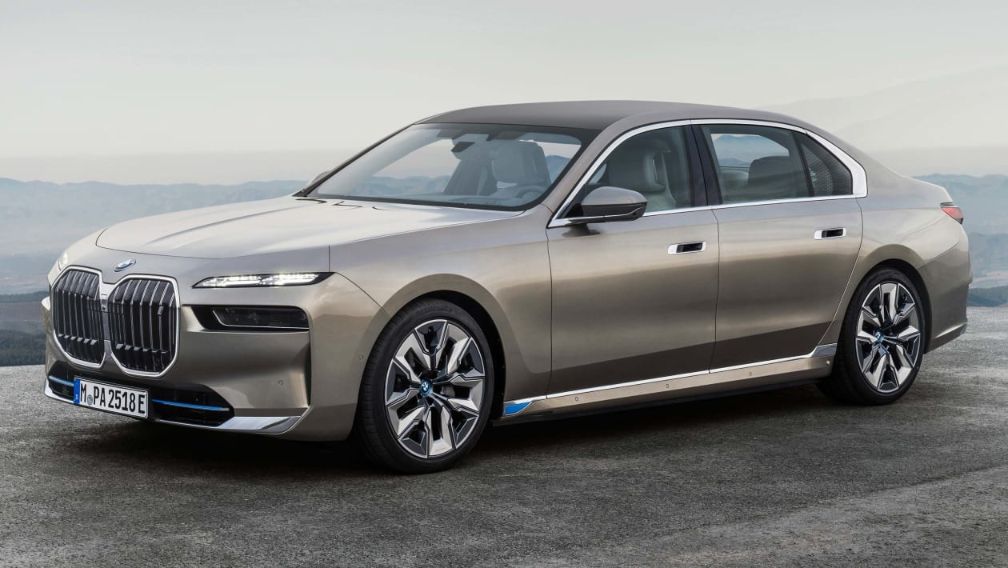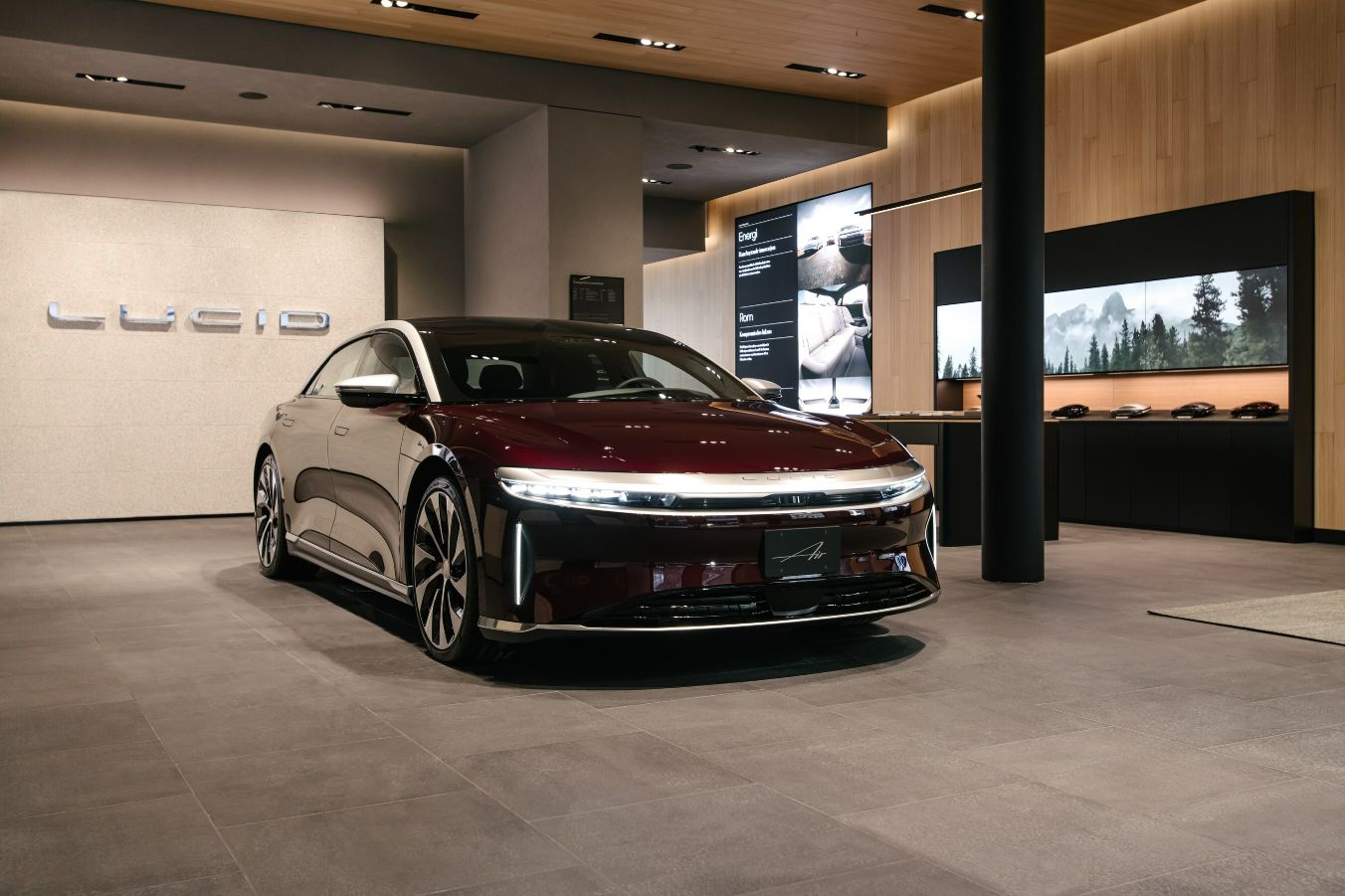In a stunning display of automotive technology, the BMW M8 Competition and the Lucid Air Grand Touring recently went head-to-head in a U-drag race, showcasing their capabilities and highlighting the ongoing transition towards an all-electric future. This unique race format not only tested acceleration but also evaluated braking and handling, providing a comprehensive assessment of each car’s performance.
Let’s delve into the specifications of these two remarkable vehicles. The BMW M8 Competition boasts a twin-turbo V8 engine, generating an impressive 617 horsepower (460 kW) and 553 lb-ft (748 Nm) of torque. On the other hand, the Lucid Air Grand Touring, equipped with an all-electric setup, delivers a staggering 819 horsepower (610 kW) and 885 lb-ft (1198 Nm) of torque, clearly surpassing the BMW in terms of raw power.
While electric vehicles are renowned for their lightning-fast acceleration, the Lucid Air GT falls slightly short of the BMW’s blistering pace. However, the weight of the cars plays a crucial role in this outcome. Weighing in at 4,295 pounds (1,948 kg), the BMW M8 Competition is lighter than its American counterpart, the 5,226-pound (2,370 kg) Lucid Air GT.
This weight disparity becomes a significant factor in both races. Despite having lower power figures, the BMW M8 Competition excels in braking, cornering, and maintaining its lead throughout the race. Drivers have speculated that the Lucid Air GT may not be delivering its full power from the start, evident in its inferior braking and cornering performance.
While it’s undeniable that automotive technology has made remarkable strides, gasoline-powered rockets like the BMW M8 Competition still demonstrate their prowess on the race track. However, we can’t help but wonder how a hypothetical Lucid Air Sapphire model would have fared in this competition.
As the automotive industry continues its rapid evolution, races like these provide valuable insights into the performance capabilities of different vehicles, regardless of whether they would typically be cross-shopped. With each passing year, we witness the boundaries of electric vehicle technology being pushed further, ultimately shaping the future of transportation.

